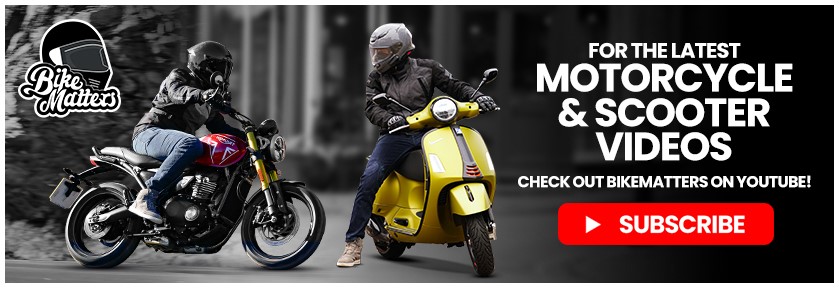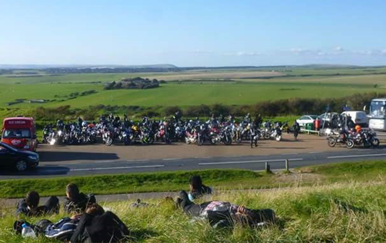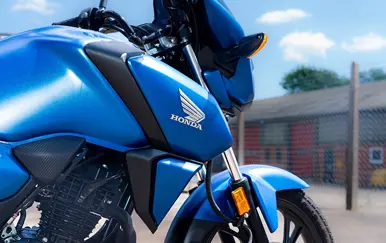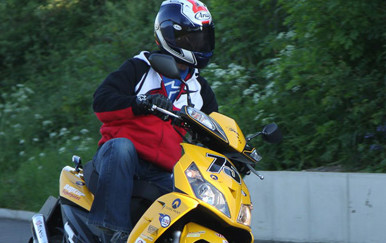Riding a motorcycle is great fun, period.
Riding with mates can be even better but when there’s more than two of you taking part it also brings its own potential problems, such as becoming split up at junctions, getting in each other’s way and so on, which is why there are accepted protocols and procedures to group riding designed both to keep you safe and to avoid confusion and problems.
Here we present our top tips for safe motorcycle riding in a group...
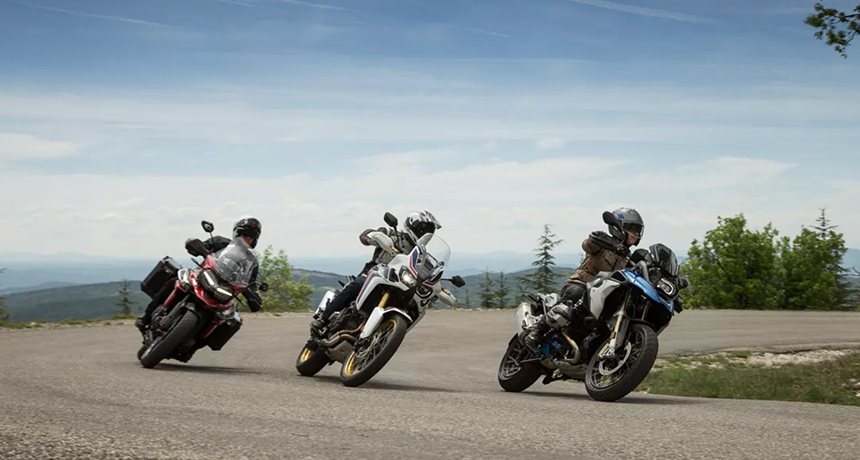
Arrive prepared
Before setting off on your group ride have an agreed rendezvous point and start time (I’m assuming all group members don’t live together!).
Also, when you rendezvous it’s important every rider arrives ‘ready to go’. That means all having full tanks of fuel (or at least similar fuel levels), wearing appropriate gear for the journey and conditions and all coming equipped with a charged phone in case you become separated and means of payment.
It’s also advisable that at least one of the group brings a small toolkit and first aid kit, just in case.
Agree on your group size
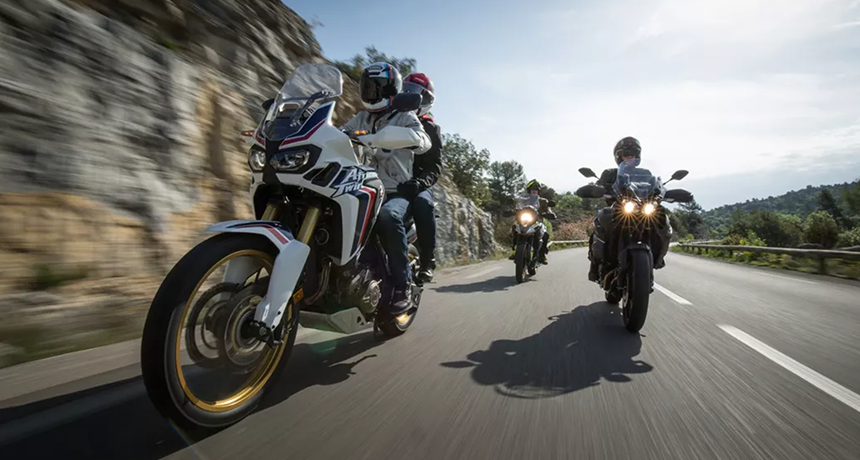 To keep things manageable, restrict the number of members in your group rides.
To keep things manageable, restrict the number of members in your group rides.
As a rough guide, try to keep that number between three and seven. A group of five or less is better for less experienced riders, while you can push that number up to seven for a more experienced group. If you’ve more than seven riders, split the group up into smaller groups.
Conduct a riders meeting before you ride:
This isn’t as serious as it sounds – but is still very advisable.
All members should understand before setting off who the lead rider will be, where you're going and any stops along the way. This isn’t a formal affair, more a useful opportunity to get everyone ‘on the same page’, make any introductions if necessary and set the tone for the ride.
Decide on the leader and ‘Tail-end Charlie’
The rider meeting is also a good opportunity, if you haven’t done so already, to select your group leader and ‘Tail-end Charlie’.
The group leader is the lead rider on the road, is the one whose job it is to safely guide the group through any situations that might arise and, as such, should be fully knowledgeable of the route and be one of, if not the most experienced rider in the group.
The ’Tail-end Charlie’ or ‘sweep’ rider, meanwhile, is the one who’s job it is to hang back at the very end of the group to make sure it doesn't get split up. This should also be one of the more experienced riders as their expertise might be necessary to help others catch up if the group gets split.
Maintain a safe distance to the rider in front
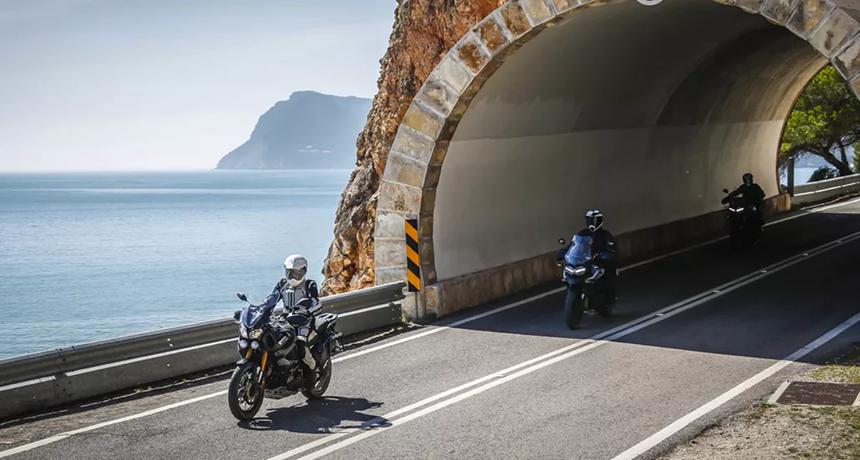
Once riding, try to maintain a following distance of two seconds from the rider directly in front of you.
This allows a margin for error if anyone encounters a sudden obstacle. It’s a common mistake to ride too close to the rider ahead while in a group. At the same time don't ride too far behind, either.
Leave too much room and there's an open space for a random driver to cut in on your formation, which breaks group cohesion.
Ride ‘staggered’
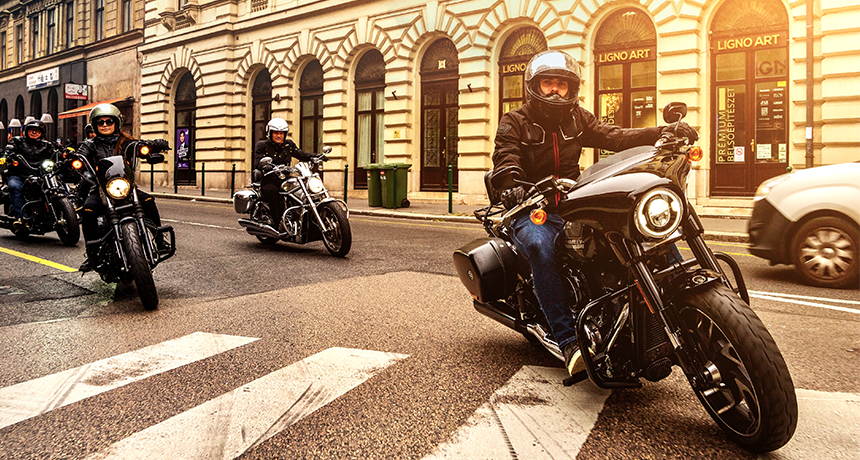 Group riding can be most effective when it travels in a staggered formation – particularly on larger roads and motorways.
Group riding can be most effective when it travels in a staggered formation – particularly on larger roads and motorways.
By riding in a ‘zigzag’, where the lead rider positions themselves on one side of a lane, the next on the opposite side and so on so that every second rider is on the same side of each lane, the group is compact, every rider gets maximum visibility, and it lets them freely move left or right if necessary.
The only time a staggered formation isn’t recommended is when cornering when each rider should choose their own line and distance to the rider in front according to conditions so that everyone is effectively riding in single file. Once the road straightens, you should return to a staggered formation.
Don’t overtake – ever
Nothing is more hazardous in group riding than people trying to overtake each other. Simply don’t.
Use the ‘drop-off’ system at junctions
Junctions can cause mayhem with riding groups as they can split groups up leaving riders unsure of where they’re going.
The most common system for negating this is the ‘drop-off’ system. It works like this: The leader, who is responsible for navigating the route, stays at the front while the Tail-end Charlie, stays last – but under this system these are the only two riders who maintain their position in the group.
If the group comes to a junction, the rider immediately behind the leader stops as close to where the leader indicates with a hand point (ensuring it is safe to do so) thereby indicating the direction for the other members to take.
All the other riders then pass this ‘marker’ except the Tail-end Charlie who pauses to allow the marker to rejoin the group in front of him. At the next junction, the new ‘second rider’ does the same thing, and so on.

